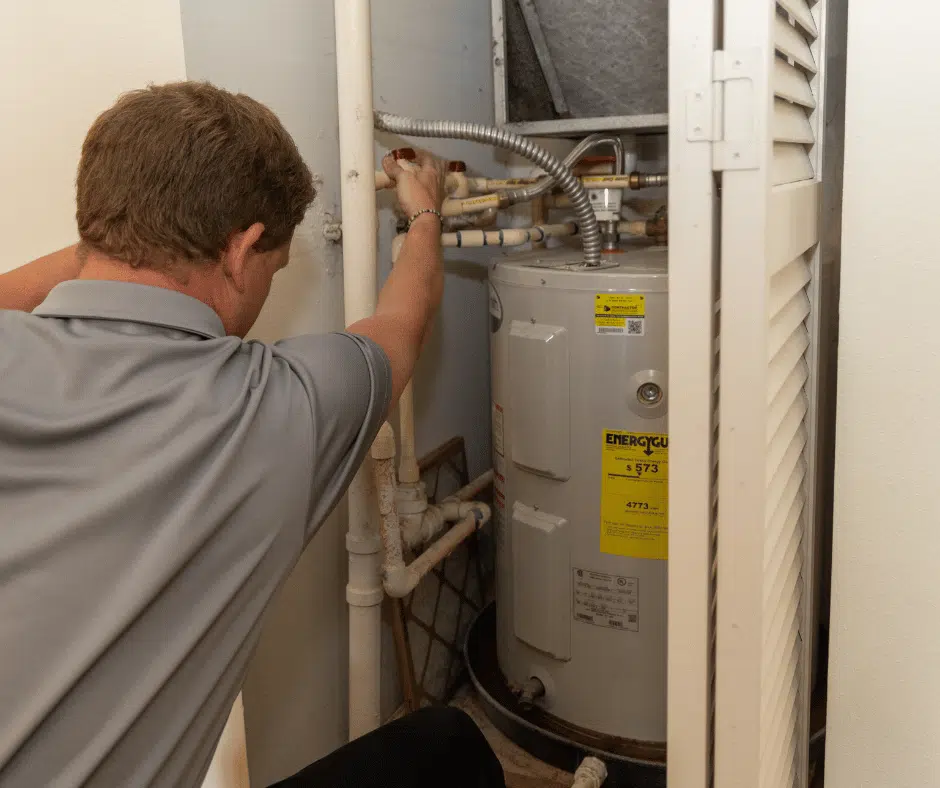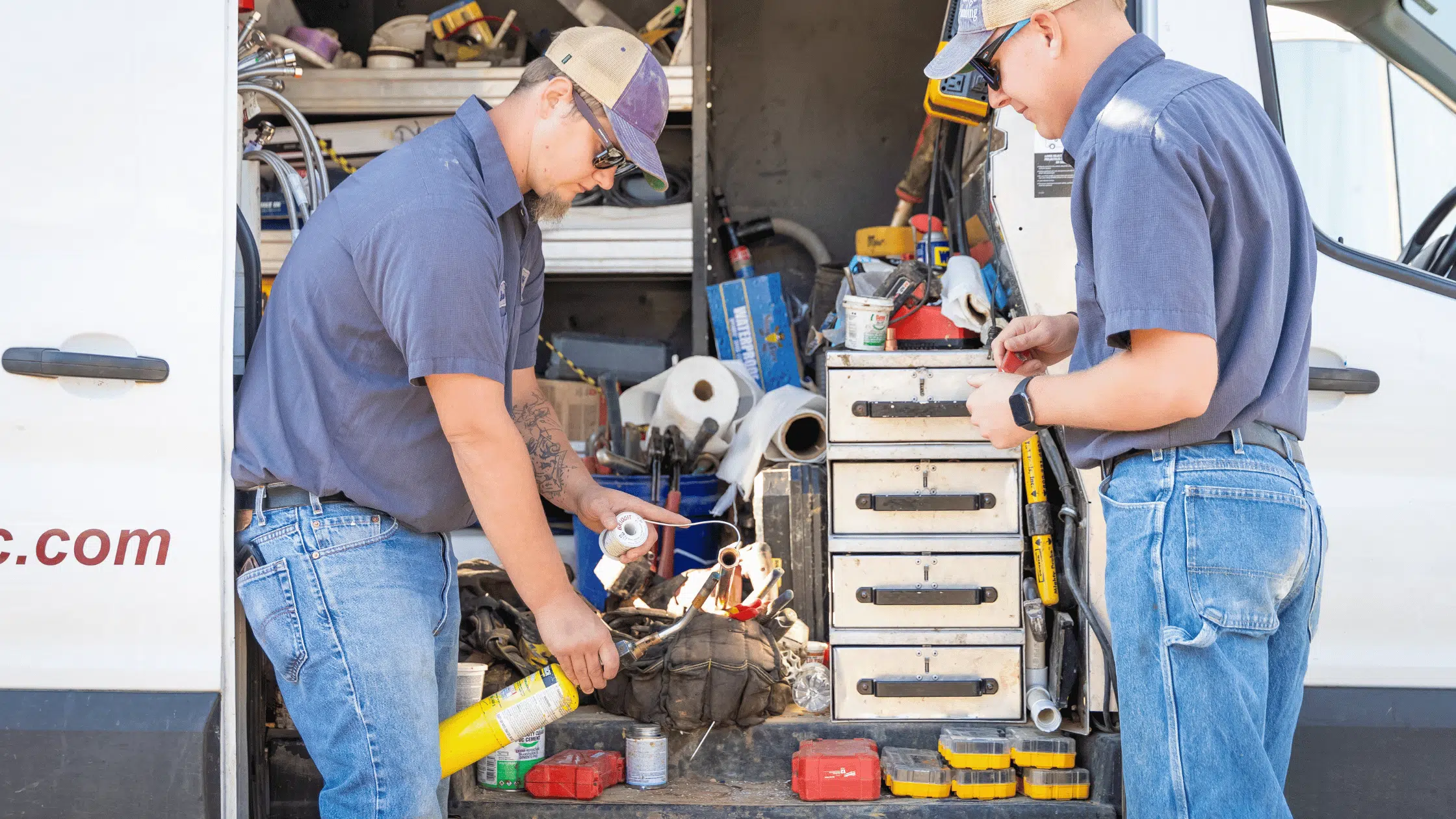Water heaters play a vital role in maintaining the comfort of our homes, supplying hot…

Winter Chill: How to Prevent Pipes from Freezing
When winter comes, it’s super essential for homeowners to do things to prevent pipes from freezing. If pipes freeze, it can cause significant problems and be expensive to fix. But don’t worry! By doing something at the right time, like protecting your pipes, you can keep them from freezing. Let’s go through easy steps and helpful tips to stop pipes from freezing. That way, your home can stay warm and cozy during winter!
Winter is a magical season, but it can also bring some unwanted problems for homeowners, such as frozen pipes. Burst pipes can be a real headache, both financially and emotionally. This guide will explore some simple yet effective steps to prevent your pipes from freezing and bursting, ultimately saving you thousands of dollars in plumbing repairs. Let’s dive into the essential strategies to winter-proof your home.
As temperatures plummet, the risk of pipes bursting becomes a homeowner’s nightmare. Learn practical steps and expert tips to prevent pipes from bursting and save yourself from plumbing disasters.
Winter Woes: Plumbing Frozen Pipes
As winter’s icy grip tightens, homeowners nationwide face a common enemy – frozen pipes. The chilling consequences of burst pipes can wreak havoc on your home and wallet. But fear not! This comprehensive guide will unravel the secrets to keeping your pipes warm and your worries at bay. Learn how to safeguard your plumbing from the bitter cold and avoid the nightmare of burst pipes.
How to prevent pipes from freezing
From simple preventive measures to strategic insulation techniques, we’ll explore a comprehensive approach to keep your pipes warm and flowing smoothly. Prepare to bid farewell to the winter plumbing woes as we delve into the essential steps to prevent pipes from freezing and ensure a worry-free season.
- Shut Off Outdoor Spigot Valves
- Drain Excess Water
- Insulate Exposed Indoor Pipes
- Secure with Heating Cables
- Open Cabinet Doors for Indoor Pipes
- Keep Water Moving
1. Shut Off Outdoor Spigot Valves
Essential to avoid Plumbing Frozen Pipes in Hartselle, AL
Implementing proactive measures is paramount in the battle against frozen pipes, and a fundamental tactic involves shutting off outdoor spigot valves. When winter’s icy fingers tighten their grip, it’s crucial to take preemptive action by locating and turning off the water valve dedicated to your outdoor spigot. This seemingly straightforward step is a robust initial line of defense, effectively preventing water from freezing within the exposed outdoor pipes.
By halting water flow to these vulnerable areas, you create a protective barrier that significantly reduces the risk of frozen pipes and the subsequent threat of bursts. This preventive measure not only safeguards your plumbing infrastructure but also contributes to the overall resilience of your home against the challenges posed by plummeting temperatures. As we delve deeper into how to prevent pipes from freezing, this foundational action sets the stage for a comprehensive approach to winterizing your plumbing system.
One of the first lines of defense against frozen pipes is to shut off the water valve to your outdoor spigot. This simple step can prevent water from freezing in the exposed outdoor pipes and causing potential bursts.
2. Drain Excess Water
Before winter fully sets in, take the time to drain excess water from your pipes. This crucial step minimizes the risk of freezing by removing any water that could expand and damage your plumbing.
Letting your faucets drip is a simple yet effective technique to prevent pipe freezing. I’d appreciate it if you could find out why this age-old trick works and how it can save you from the headaches of burst pipes. We’ll provide tips on when and how much to let your faucets drip, ensuring a steady flow without wasting water.
3. Insulate Exposed Indoor Pipes
Protecting your indoor pipes is equally essential. Invest in foam insulation in long strips that can be easily cut down to size with a utility knife. Cover exposed pipes with this insulation to create a barrier against the cold and keep your pipes snug.
Unwanted drafts can be the silent culprits behind frozen pipes. I’d like you to discover the importance of sealing gaps and cracks in your home’s infrastructure to keep the cold air out. We’ll provide practical tips on identifying and closing potential entry points for frigid air, ensuring your house remains a warm haven.
4. Secure with Heating Cables
For pipes needing extra heat to stay fluid, use cable ties to secure heating cables. This simple yet effective solution ensures that specific pipes receive the warmth they need, preventing freezing and potential bursting.
Explore innovative heating solutions to keep your pipes cozy during the winter months. From installing pipe insulation sleeves to using heat tape, we’ll delve into heating hacks that can significantly prevent frozen pipes.
5. Open Cabinet Doors for Indoor Pipes
Open the cabinet doors if the pipes under a sink are against an outdoor-facing wall. Allowing the heat from the house to flow underneath the sink creates a warmer environment for the pipes, reducing the risk of freezing.
6. Keep Water Moving
On frigid days, take a proactive approach by leaving at least one sink on a slow drip. This keeps water flowing in the pipes, preventing stagnation and reducing the likelihood of freezing.
As temperatures plunge and the winter cold intensifies, adopting a proactive approach becomes paramount to prevent pipes from succumbing to the icy grasp of freezing. One effective strategy in your arsenal is to keep water moving within your plumbing system.
Consider leaving at least one sink on a slow, continuous drip on those bone-chilling days. This seemingly simple action is a dynamic defense mechanism, ensuring a constant water flow through the pipes. By allowing a steady trickle, you actively counteract the risk of stagnation – a common precursor to freezing.
This consistent water movement maintains a higher temperature within the pipes and minimizes the chances of ice formation. Embracing this small yet impactful practice can significantly reduce the likelihood of frozen pipes, adding an extra layer of protection to your home’s plumbing system during the coldest days of winter.
Winter-Proof Your Home’s Plumbing with George
Winter may be relentless, but with these practical tips, you can fortify your home against the threat of burst pipes. By taking preventive measures such as shutting off outdoor spigot valves, draining excess water, insulating indoor pipes, using heating cables, opening cabinet doors, and keeping water moving, you’ll be well-equipped to face the cold confidently. Don’t let frozen pipes spoil your winter wonderland – follow these steps and keep your plumbing intact throughout the season!

As winter’s frosty fingers reach for your pipes, armed with the knowledge gained from this guide, you can confidently protect your home from the perils of frozen and bursting pipes. You can implement these proactive measures, save yourself from potential disasters, and ensure a cozy and worry-free winter season. Stay warm, stay informed, and let your pipes thank you for the TLC they deserve!
Would you be ready to protect your home from the winter freeze? Act now to protect your house! Call us at (256) 262-7616 for personalized assistance and expert advice on preventing frozen pipes. Don’t let the cold catch you off guard. Contact us and ensure a warm and secure home throughout the season!




